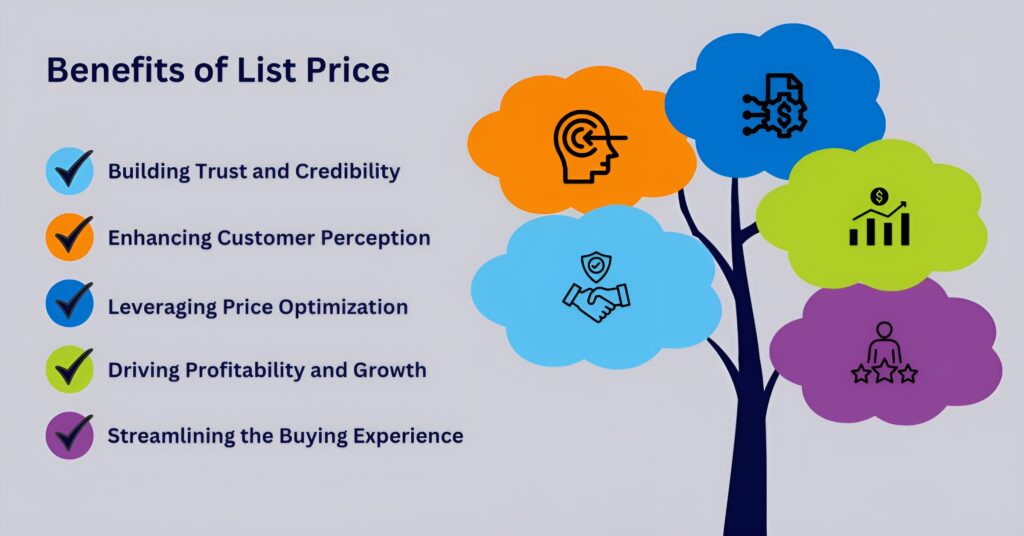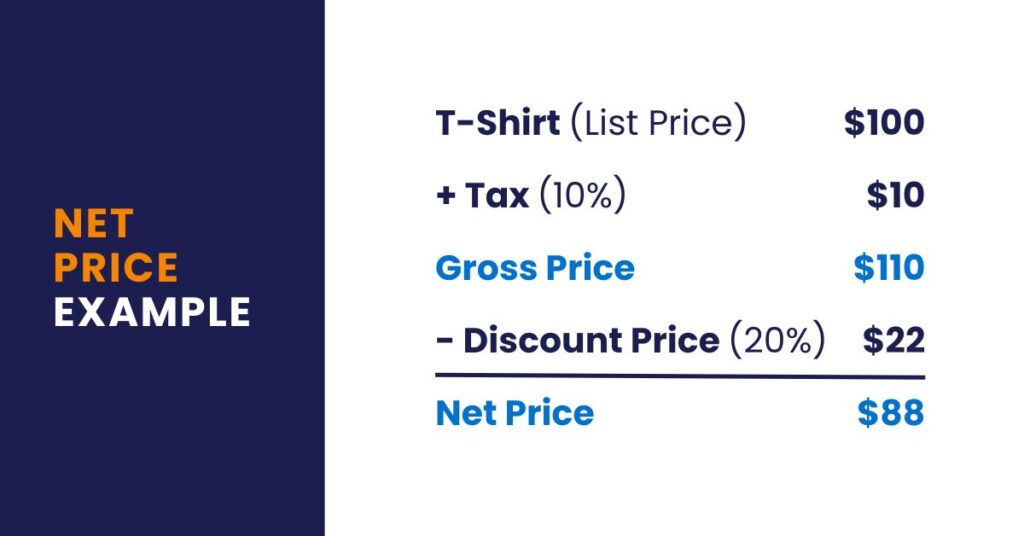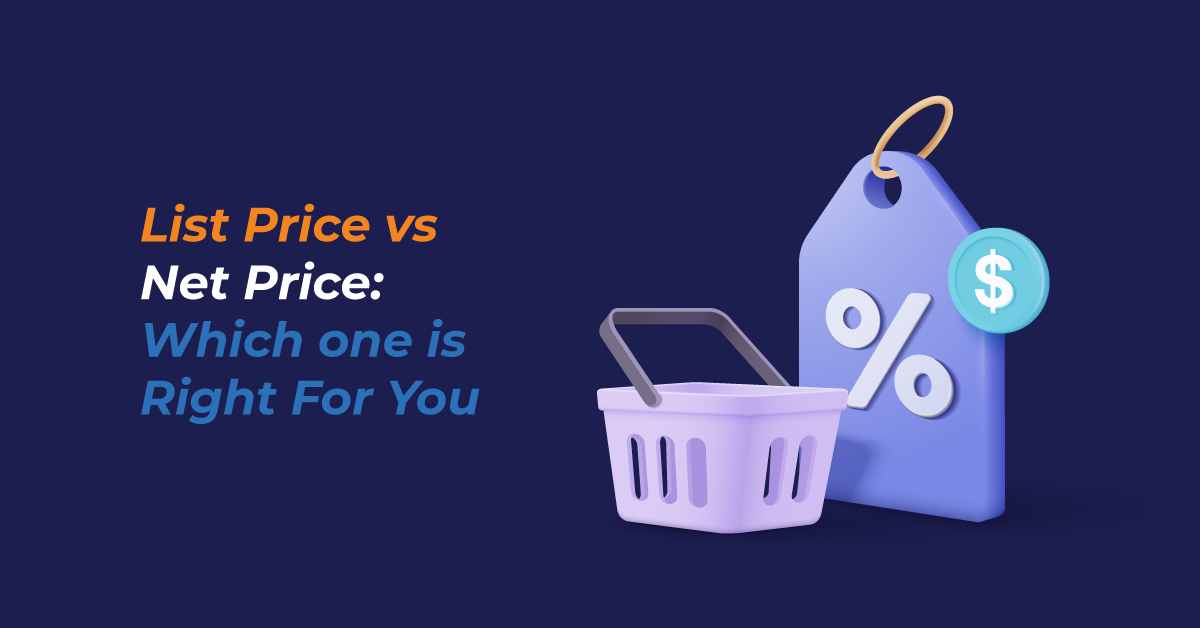Price is the key to gaining better profits. But the fact is that, pricing is never the same and keeps on changing. This is especially right for eCommerce business. Now, let us give you an idea about the two types of price present in the online market. List price and net price. You might be wondering what that is. Keep reading to know more.
The list price is the maximum price at which the product can be sold while the net price is the price at which the consumer buys a product.
The difference between both the prices is that e-commerce might implement various discounts and pricing strategies between the two! The retail price optimization strategies help in achieving a high conversion rate and improve the profit margin.
The list price vs net price has always been a matter of concern; however, the variation between these two types of prices can be controlled accurately and precisely based on the company’s objectives. Price monitoring and price optimization can come to your rescue.
Let us have a better look at these two concepts in detail in this blog.
What is List Price?
The list price is the maximum retail price charged by the manufacturer. This price consists of the production cost of the product along with the profit margin for selling it on the ecommerce platform. It is the initial value above which the seller should analyze the shipping cost of the products and the profit margin you wish to receive.
Also, the brand image should be taken into consideration. A reputed and renowned brand will be able to increase the price of its products as the customers think of them to be unique and higher quality items. Consumers are willing to pay more for such brands. Once the maximum possible price has been achieved, it is the seller’s decision of they wish to apply the discounts or offer the products at a new net price. WebDataGuru is the best to provide you with the list and net price objectives for your businesses.
Benefits of List Price
In the ever-evolving realm of eCommerce pricing strategies hold the key to capturing the hearts of customers and fueling business growth. Let us guide you through the remarkable advantages it offers while showcasing the crucial role of price optimization in this digital landscape.

1. Building Trust and Credibility
In the virtual world of eCommerce, where customers can’t physically examine products, list prices act as beacons of transparency and trust. By clearly displaying the original price alongside any promotional discounts, you demonstrate honesty and authenticity to your customers. This fosters credibility, building a solid foundation for lasting customer relationships and repeat purchases.
2. Enhancing Customer Perception
A meticulously set list price creates an impression of value and quality for your products. When customers perceive your offerings as premium, they are more likely to place greater trust in your brand and be willing to pay a higher price. By strategically positioning your list price, you differentiate your eCommerce store from competitors, establishing a reputation for excellence and attracting discerning customers.
3. Leveraging Price Optimization
Price optimization is the secret ingredient that maximizes the benefits of list pricing. By analyzing vast amounts of customer data, market trends, and competitor insights, sophisticated algorithms empower you to fine-tune your pricing strategy for optimal results. This dynamic approach ensures that your list prices are not only competitive but also tailored to maximize revenue and profit margins, striking the perfect balance between customer satisfaction and business success.
4. Driving Profitability and Growth
List prices, when combined with effective price optimization techniques, have the potential to catapult your eCommerce business to new heights of profitability and growth. Through continuous analysis and optimization, you can identify pricing sweet spots that maximize revenue and maximize profit margins. This data-driven approach allows you to stay ahead of the competition, adapt to changing market dynamics, and unlock untapped opportunities for expansion.
5. Streamlining the Buying Experience
By clearly displaying list prices alongside any discounts or promotions, you streamline the buying experience for your customers. They can quickly assess the original price, evaluate the discount offered, and make informed purchase decisions. This simplicity not only expedites the buying process but also minimizes customer frustration, resulting in higher conversion rates and increased customer satisfaction.
What is Net Price?
A majority of the products are sold at net prices. The net price meaning is product being sold after application of discounts and offers for the retail buyers. They might be sold after price reductions on the wholesale channels. In the difference between the list price vs net price, the aim of net price is to attract a huge number of potential customers.
However, one of the key factors is not to reduce the discounts or suppress the eCommerce profit margin. The price optimization retail strategy should be able to strike a balance between economic solvency and lead acquisition.
Significance of Net Price
Net price plays a crucial role from the marketing viewpoint. It is the actual price paid by the customers for a product. Net price is important as it is the price that helps a business generate actual revenue. In a competitive market, there is a price war and this price is the net price not the gross price. Even if the gross price is higher and offers incentives in the form of higher discounts and lower prices and the net price is less than other players, the business can capture the market share successfully.
Revenue is generated from the net price. As net rice depends on various external factors, it is difficult to accurately forecast. There might be an increase in the seasonal discounts or tax rates.
These factors affect the actual revenue of the firm.
Benefits of Net price
Streamlined Pricing Structure
Net pricing offers a simplified and straightforward approach to pricing. By setting the net price as the final amount to be paid by the customer, you eliminate confusion and ambiguity. This clarity not only enhances the customer experience but also streamlines internal processes, making it easier to calculate costs, track revenue, and manage financial operations. With a streamlined pricing structure, your business operates with precision and efficiency.
Enhanced Trust and Transparency
In today’s business landscape, trust and transparency are paramount. Net pricing plays a pivotal role in building and maintaining customer trust. By presenting the final price upfront, without hidden fees or additional charges, you demonstrate honesty and integrity. This transparency instills confidence in your customers, fostering long-lasting relationships built on trust and ensuring their satisfaction with each purchase.
Facilitating Decision-Making
Net pricing empowers customers to make informed purchasing decisions. By presenting the final price from the outset, customers can accurately evaluate the affordability and value of a product or service. This facilitates their decision-making process, enabling them to compare prices and offerings more efficiently. With net pricing, you provide a clear and concise picture of the total cost, making it easier for customers to choose your business over competitors.
Net vs List Price
What is the difference Between List Price and Net Price?
The difference between list vs net price is extremely important even if they look minutely different on the surface. It plays a crucial role as a successful business should be able to turn the profit organically. Profit margin is directly related to the price of the products irrespective of it being sold for net, list, or any other price.
One of the list price examples is as follows:
An emerging brand depends heavily on the list price and doesn’t wish to offer significant discount for the consumers or resellers. It creates a retail price optimization strategy wherein the final price is equal to the list price. In a perfect scenario, if the sales are strong, the profits would be high. However, in real world, competitors will undercut the emerging brand’ list price and will be able to perform better owing to their competitive net price.
How do you Calculate List Price and Net Price?
The net price formula is as follows:
Gross Price = List Price + Additional Charges
Net price = Gross price – Discounts
Here’s a look at net price examples:

Suppose the list price of a t shirt is $100
Tax is 10% on the listed price and discount offered is 20%
The Gross price of the t shirt is 100+ 10% of 100 = $110
Net price of the t shirt= 100 – 20% of 110 = $88
This is the final amount the buyer will have to pay for buying the t-shirt.
If you are confused between list price vs net price for retail price optimization, you can benefit from AI. AI helps in optimizing the price for satisfying the buyers and maintaining the profit margins. Why is AI price optimization effective? Self- learning algorithms scan massive volume of data and endless pricing scenarios. They suggest relevant price for analyzing the possible impact of the sales promotion.
Retail price optimization helps in deciding how customers respond to different price points for the products and services via different channels. When a business wishes to decide between list price vs net price or what net price to charge from the buyers for improved profit margin, retail price optimization tools can help.
How to Approach Net and List Prices?
Finding a suitable price for a product is subjective depending on various factors such as cost of labor, material, overhead, profit, etc. It also depends on the competition. The sticker price must be reduced to stay competitive.
- Calculate Cost + Pricing
Consider all the costs related to the product and add the desired profit margin for determining the list price.
- Analyze the Competitors
It is important to take a note of the market competition for identifying a pricing strategy that doesn’t allow the competitors to win.
- Communicate with Distribution Channels
Develop a strong working relationship with the distributors to bargain the net prices and beneficial discounts.
- Know the Shoppers
It is important to know the shoppers and how much they wish to pay for finding the final price that works for the business as well as the buyers.
The above-mentioned factors will help in identifying how to decide between list price vs net price for price optimization.
Take Growth and Pricing Together for Exceptional Success
By leveraging net pricing alongside intelligent price optimization techniques, businesses can unlock a powerful synergy that propels them towards growth, profitability, and customer satisfaction.
Both strategies can help you grow. It is only your decision as to which works best for your company. So, if this helps get in touch with us today to know more!

Recent Comments